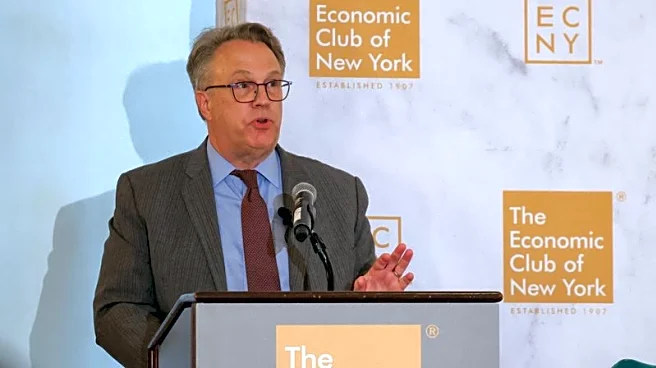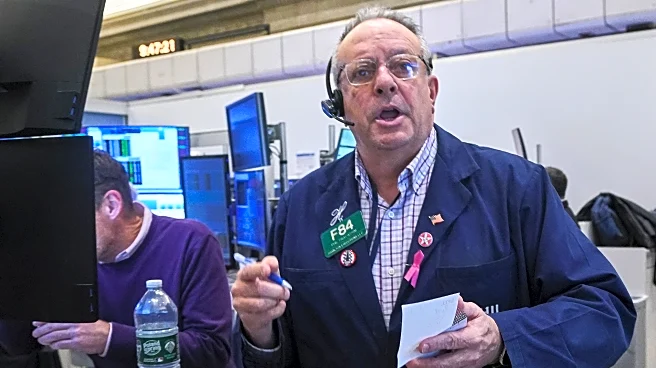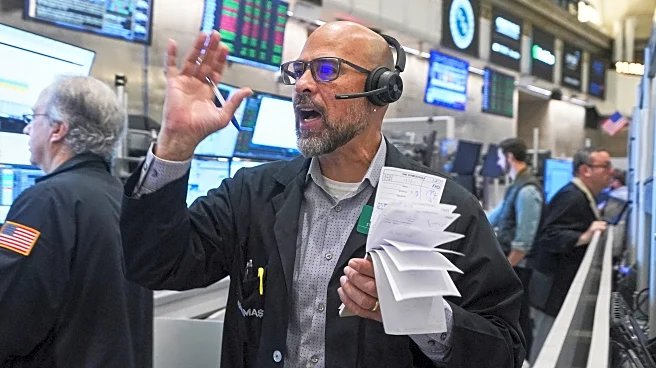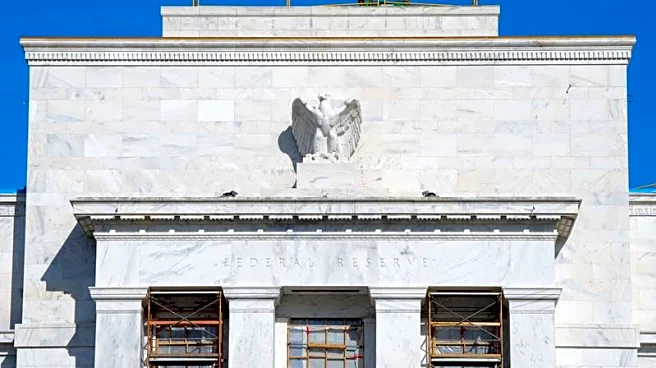What's Happening?
John Williams, President of the Federal Reserve Bank of New York, has indicated that there is room for further adjustments to the federal funds rate. Speaking in Santiago, Chile, Williams expressed that monetary
policy remains modestly restrictive and suggested that lowering rates could bring policy closer to a neutral stance. His comments have influenced financial markets, with stock market futures rising and Treasury yields falling. Traders now anticipate a higher probability of a rate cut at the upcoming Federal Open Market Committee meeting. Williams' stance contrasts with other Fed officials, such as Boston Fed President Susan Collins, who remains cautious about further rate reductions due to inflation concerns.
Why It's Important?
Williams' remarks highlight the ongoing debate within the Federal Reserve regarding the balance between supporting economic growth and controlling inflation. His position suggests a focus on addressing labor market weaknesses, which could lead to more accommodative monetary policy. This approach may stimulate economic activity by reducing borrowing costs, encouraging investment, and supporting consumer spending. However, it also raises concerns about potential inflationary pressures if rates are lowered too aggressively. The differing views among Fed officials underscore the complexity of monetary policy decisions and their impact on the broader economy.
What's Next?
The Federal Open Market Committee's upcoming meeting will be closely watched for decisions on interest rates. Williams' comments have shifted market expectations, increasing the likelihood of a rate cut. The Fed's actions will depend on economic indicators, including labor market data and inflation trends. Stakeholders, including businesses and investors, will need to adapt to potential changes in monetary policy. The Fed's decision will have significant implications for financial markets, influencing stock prices, bond yields, and currency values. As the central bank navigates these challenges, its policy choices will shape the economic landscape in the coming months.













